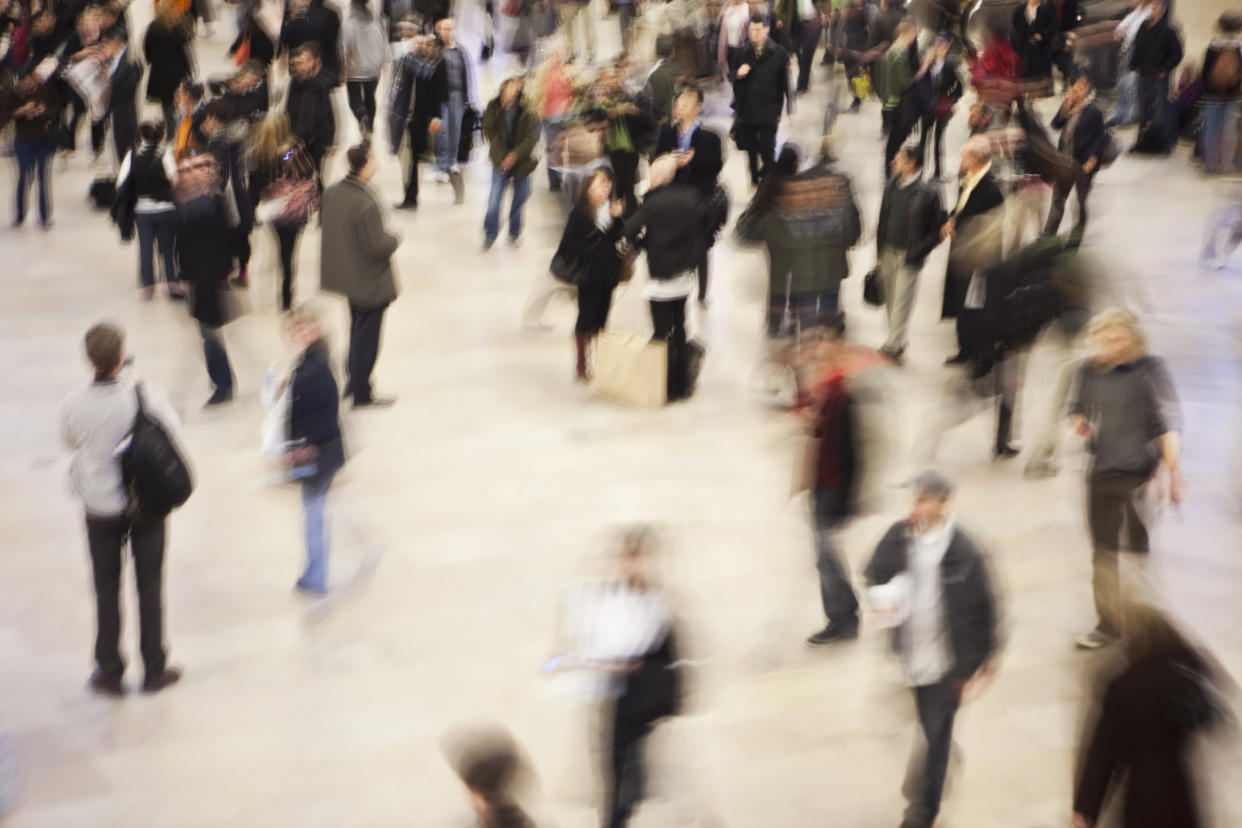There's Now a Rapid, Accurate COVID-19 Air Detector

Credit - fStop—Getty Images
The COVID-19 pandemic will forever be associated with unprecedented lockdowns and inconveniences such as wearing masks in public. And that’s largely because health experts had no idea exactly where the SARS-CoV-2 virus was lurking, and how risky crowded settings such as workplaces, classrooms, and public transportation were.
But what if an easy-to-use, mobile device could detect, in real time, SARS-CoV-2 in a given space? That would give people confidence to go maskless, if no virus were floating around, or take precautions like wearing a mask or avoid the setting altogether if the virus was detected.
Researchers at Washington University St. Louis report in Nature Communications that they have done just that, with a prototype device about the size of a microwave that can pick up signs of SARS-CoV-2 in about five minutes. Led by Rajan Chakrabarty, associate professor of energy, environmental, and chemical engineering, the team wanted to improve on the cumbersome process of relying on commercial air detectors that can only sample air and require additional PCR testing of the samples that can take as long as 24 hours to return results. The devices are also costly, ranging from thousands to tens of thousands of dollars per unit. After three years, they have developed a device that they say performs even better than the commercial methods in lab testing, and could be scaled to cost a few cents per test.
More from TIME
The key to the new COVID-19 detector’s success is a super-fast method of circulating air into the device that mimics a cyclone. It pulls air at about a thousand liters a minute from the environment, creating a conical shape that traps any particles circulating in that flow. The device is equipped with a biosensor that does two things. First it takes advantage of tiny molecules obtained from llamas that stick exceptionally well to the spike protein of SARS-CoV-2 to pull out any virus that might be present. Next, an electric current is passed through the biosensor and causes oxidation of a specific amino acid in the spike protein, the final reaction that verifies the presence of the SARS-CoV-2 virus.
In lab tests, the device was 77% to 83% accurate in detecting the COVID-19 virus, including its latest variants. (It detects SARS-CoV-2, but cannot distinguish between the different variants.) When the researchers tested different concentrations of virus on their device and two commercially available air detectors, theirs was the only one able to detect low levels of viral genetic material in the form of RNA.
The team also sent prototypes to two people who tested positive for COVID-19 and who volunteered to use the device in their homes. The air samplers accurately detected the virus in their respective bedrooms after five minutes of sampling.
Viral RNA exhaled or expelled by an infected person doesn’t remain in droplet form, but becomes aerosolized into particles five to 10 micrometers in diameter (for comparison, the diameter of a human hair is 40 to 70 micrometers). Given that a room with a single infected individual can contain as few as 10 RNA copies of the SARS-CoV-2 virus per cubic meter of air, the odds of picking up something that small in a typical room is about one in a million or one in a billion. “It’s like finding a needle in a haystack,” says Chakrabarty.
But because this device filters the air at such a high velocity it greatly increases the chances of picking up those microscopic viral particles “The beauty of this detection technique is that it is ultra sensitive,” says Chakabarty. Based on tests in the lab, he says, it can likely detect the virus emitted from even a mildly infected person in a typical room.
And, because the device is portable, Chakrabarty expects that it can be used anywhere people want immediate reports on whether the COVID-19 is present, including in homes. Building the detector cost his lab a few thousand dollars, but he anticipates that with mass production, the cost will come down significantly. One disease-detection company, Y2X Life Sciences, based in New York, is hoping to license the technology from the university to do just that.
In addition to using the detector for immediate readings of COVID-19 in places like workspaces, classrooms, and airports— not to mention hospitals—Chakrabarty also anticipates the device can be part of building preventive public health strategies if they are installed in ducts to run 24 hours a day to detect virus on whole floors or even a small building. And if other diseases-causing viruses come along, the biosensor can be adjusted to detect those as well. Already, the research team is working on a device that could also identify influenza and RSV.

